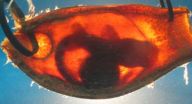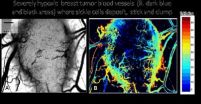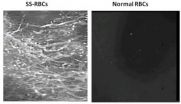(Press-News.org) A new study, funded in part by the National Institutes of Health (NIH) and Health Resources and Services Administration, and published in the January 2013 issue of Liver Transplantation, a journal of the American Association for the Study of Liver Diseases (AASLD), found that the non-use of donor livers climbed through 2010 due to a worsening of donor liver quality, primarily from donation following cardiac death. Diabetes, donor age, and body mass index (BMI) were also linked to a decrease in use of organs.
"For patients with end-stage liver disease, transplantation is the only option for extending life, but organ availability places constraints on the transplant community," explains Dr. Eric Orman with the University of North Carolina School of Medicine in Chapel Hill. "One of the methods to increase the donor pool is to include donors with less than ideal health status—those with fatty livers, older donors, and donation after cardiac death."
In an attempt to increase available livers for transplant, the transplant community has gradually extended donation criteria. However, previous research shows that poor outcomes may occur following transplant of more inferior organs. In fact, studies have shown an increased recipient morbidity and mortality risk with donation after cardiac death (when circulation ceases) than with standard donation following brain death in which donor circulation is sustained.
For the present study researchers used data from the Organ Procurement and Transplantation Network (OPTN) to indentify 107,259 deceased donors in U.S. between 1988 and 2010. Donors were 18 years of age and older who had a least one organ (liver, heart, intestine, kidney, lung or pancreas) used for transplantation. The mean donor age was 44 years; 41% were female and 68% were white. Split liver donations and donors with BMI less than 14 kg/m2 or more than 50 kg/m2 were excluded.
Analysis indicates that 41,503 donations occurred after June 30, 2004 with 82% of livers used for transplant and 18% unused. The number of unused livers decreased from 1,958 (66% of donors) in 1988 to 841 (15%) in 2004, and then increased to 1,345 (21%) in 2010. Liver non-use was independently linked to older donor age, greater BMI, diabetes prevalence and donation after cardiac death—all of which are on the rise in the U.S.
Researchers reported a four-fold increase in the odds of non-use of livers from donation following cardiac death donors between 2004 and 2010, with the proportion of nonuse climbing from 9% to 28% during the same time period. "Our findings show nonuse of livers for transplantation is steadily rising, and is primarily due to donation after cardiac death," concludes Dr. Orman. "If these trends continue, a significant decline in liver transplant availability would be inevitable."
In a related editorial also published in Liver Transplantation, Dr. Anton Skaro from the Feinberg School of Medicine at Northwestern University in Chicago, Ill. concurs, "Utilization of livers donated after cardiac death increases risk of biliary complications, greater costs and higher graft failure rates, resulting in a reduction of liver transplants using organs donated after cardiac death in the U.S. since 2006." Dr. Skaro suggests that liver transplantation using organs donated after cardiac death should be encouraged for recipients who would have poor outcomes by remaining on the waitlist.
###
This study and editorial are published in Liver Transplantation. Media wishing to receive a PDF of the articles may contact sciencenewsroom@wiley.com.
Full citations: "Declining Liver Utilization for Transplant in the United States and the Impact of Donation after Cardiac Death." Eric S. Orman, A. Sidney Barritt IV, Stephanie B. Wheeler, Paul H. Hayashi. Liver Transplantation; (DOI: 10.1002/lt.23547) Print Issue Date: January, 2013.
URL: http://www.doi.wiley.com/10.1002/lt.23547
Editorial: "Donation after Cardiac Death Liver Transplantation: Another Fly in the Ointment." Neehar D. Parikh and Anton I. Skaro. Liver Transplantation; (DOI: 10.1002/lt.23563) Print Issue Date: January, 2013.
URL: http://www.doi.wiley.com/10.1002/lt.23563
Author Contact: Media wishing to speak with Dr. Orman may contact Les Lang with the University of North Carolina School of Medicine at llang@med.unc.edu.
About the Journal
Liver Transplantation is published by Wiley on behalf of the American Association for the Study of Liver Diseases and the International Liver Transplantation Society. Since the first application of liver transplantation in a clinical situation was reported more than twenty years ago, there has been a great deal of growth in this field and more is anticipated. As an official publication of the AASLD and the ILTS, Liver Transplantation delivers current, peer-reviewed articles on surgical techniques, clinical investigations and drug research — the information necessary to keep abreast of this evolving specialty. For more information, please visit http://wileyonlinelibrary.com/journal/livertransplantation.
About Wiley
Founded in 1807, John Wiley & Sons, Inc. has been a valued source of information and understanding for more than 200 years, helping people around the world meet their needs and fulfill their aspirations. Wiley and its acquired companies have published the works of more than 450 Nobel laureates in all categories: Literature, Economics, Physiology or Medicine, Physics, Chemistry, and Peace.
Wiley is a global provider of content and content-enabled workflow solutions in areas of scientific, technical, medical, and scholarly research; professional development; and education. Our core businesses produce scientific, technical, medical, and scholarly journals, reference works, books, database services, and advertising; professional books, subscription products, certification and training services and online applications; and education content and services including integrated online teaching and learning resources for undergraduate and graduate students and lifelong learners. Wiley's global headquarters are located in Hoboken, New Jersey, with operations in the U.S., Europe, Asia, Canada, and Australia. The Company's Web site can be accessed at http://www.wiley.com. The Company is listed on the New York Stock Exchange under the symbols JWa and JWb. END
Decline in available liver transplants expected
Lower liver quality from donation after cardiac death linked to drop
2013-01-10
ELSE PRESS RELEASES FROM THIS DATE:
Lower nitrogen losses with perennial biofuel crops
2013-01-10
URBANA – Perennial biofuel crops such as miscanthus, whose high yields have led them to be considered an eventual alternative to corn in producing ethanol, are now shown to have another beneficial characteristic–the ability to reduce the escape of nitrogen in the environment. In a 4-year University of Illinois study that compared miscanthus, switchgrass, and mixed prairie species to typical corn-corn-soybean rotations, each of the perennial crops were highly efficient at reducing nitrogen losses, with miscanthus having the greatest yield.
"Our results clearly demonstrate ...
This week in Blood: Jan. 10, 2013
2013-01-10
Welcome to "This Week in Blood," a weekly snapshot of the hottest studies from each week's issue of Blood, the official journal of the American Society of Hematology (ASH), hand-picked by Blood Editor-in-Chief Bob Löwenberg, MD, and Deputy Editor Nancy Berliner, MD.
Systemic delivery of a TLR7 agonist in combination with radiation primes durable anti-tumor immune responses in mouse models of lymphoma, Dovedi et al.
This week's plenary paper offers a promising potential new immunotherapeutic modality for the treatment of lymphoma. The authors present convincing data ...
Helping patients navigate new cancer drugs
2013-01-10
EAST LANSING, Mich. — As cancer treatment in pill form transforms how care is delivered, a new Michigan State University study underscores the challenges patients face in administering their own chemotherapy outside the supervised environment of a cancer clinic.
Chemotherapy pills can target specific cancers better than some traditional intravenous drugs, said Sandra Spoelstra, an MSU assistant professor of nursing who led the study. But they also can be difficult for patients to take.
"Prescriptions for some oral pills have complex instructions," Spoelstra said. ...
Measuring genomic response to infection leads to earlier, accurate diagnoses
2013-01-10
DURHAM, N.C. -- Duke researchers are looking to genomic technologies – not the isolation of bacteria or viruses – to quickly detect and diagnose infectious diseases such as the flu and staph.
Two studies appearing online Jan. 9, 2013, both in the journal PLOS ONE, show how a pattern of genomic information among infected individuals can be used to accurately pinpoint the cause of infection.
"Traditional diagnostic tests for infectious diseases rely on detecting the specific illness-causing pathogens. So you only find what you're looking for," said Geoffrey Ginsburg, ...
Stem cells may hold promise for Lou Gehrig's disease
2013-01-10
SAN DIEGO – Apparent stem cell transplant success in mice may hold promise for people with amyotrophic lateral sclerosis (ALS), or Lou Gehrig's disease. The results of the study were released today and will be presented at the American Academy of Neurology's 65th Annual Meeting in San Diego, March 16 to 23, 2013.
"There have been remarkable strides in stem cell transplantation when it comes to other diseases, such as cancer and heart failure," said study author Stefania Corti, MD, PhD, with the University of Milan in Italy and a member of the American Academy of Neurology. ...
Baby sharks stay still to avoid being detected by predators
2013-01-10
VIDEO:
This is a video clip of a bamboo shark embryo responding to an electrical stimulus by ceasing gill movements.
Click here for more information.
Baby sharks still developing in their egg cases can sense when predators are near, and keep very still to avoid being detected, according to research published January 9 in the open access journal PLOS ONE by Ryan Kempster from the University of Western Australia and colleagues.
Adult sharks are known to use highly sensitive ...
Deal or no deal: 5 year olds make smart decisions in games of risk
2013-01-10
You may have to be over a certain age to be a contestant on "Deal or No Deal", but children as young as five start to maximize their profits - in cookies - when making decisions similar to those on the show, according to research published January 9 in the open access journal PLOS ONE by Valerie Dufour and colleagues from the National Center for Scientific Research in France.
Children aged 3-9 were given a cookie and presented the option to either keep it or exchange it for one of 6 identical cups containing cookies. The cookies in the cups could be larger, smaller or ...
Genetic form of anemia offers new avenue to treating drug-resistant tumors
2013-01-10
VIDEO:
This is an intravital microscopy of the skin window of tumors in mice injected with
SSRBCs or NLRBCs.
Click here for more information.
The genetic mutation that causes sickle cell anemia also turns red blood cells into potent tumor killers and may offer a new way to treat some cancers that are resistant to existing treatments, according to research published January 9 in the open access journal PLOS ONE by David S. Terman of Jenomic Research Institute and colleagues ...
Brown eyes appear more trustworthy than blue
2013-01-10
People view brown-eyed faces as more trustworthy than those with blue eyes, except if the blue eyes belong to a broad-faced man, according to research published January 9 in the open access journal PLOS ONE by Karel Kleisner and colleagues from Charles University in the Czech Republic.
The study's results attempt to answer a larger question: What makes us think a person's face looks trustworthy? The authors asked study participants to rate male and female faces for trustworthiness based on two features: eye color and face shape. A significant number of participants found ...
Sickle cells show potential to attack aggressive cancer tumors
2013-01-10
DURHAM, N.C. – By harnessing the very qualities that make sickle cell disease a lethal blood disorder, a research team led by Duke Medicine and Jenomic, a private cancer research company in Carmel, Calif., has developed a way to deploy the misshapen red blood cells to fight cancer tumors.
Reporting in the Jan. 9, 2013, edition of the on-line journal, PLOS ONE, the researchers describe a process of exploiting sickle-shaped red blood cells to selectively target oxygen deprived cancer tumors in mice and block the blood vessels that surround them.
"Sickle cells appear ...
LAST 30 PRESS RELEASES:
Orthopedics can play critical role in identifying intimate partner violence
Worms as particle sweepers
Second spider-parasitic mite described in Brazil
January 2026 issues of APA journals feature new research on autism, pediatric anxiety, psychedelic therapy, suicide prevention and more
Private equity acquired more than 500 autism centers over the past decade, new study shows
New cervical cancer screening guidelines from the US Department of Health and Human Services
Estimated burden of COVID-19 illnesses, medical visits, hospitalizations, and deaths in the US from October 2022 to September 2024
Smartphone use during school hours by US youth
Food insecurity and adverse social conditions tied to increased risk of long COVID in children
Earliest, hottest galaxy cluster gas on record could change our cosmological models
Greenland’s Prudhoe Dome ice cap was completely gone only 7,000 years ago, first GreenDrill study finds
Scientific validity of blue zones longevity research confirmed
Injectable breast ‘implant’ offers alternative to traditional surgeries
Neuroscientists devise formulas to measure multilingualism
New prostate cancer trial seeks to reduce toxicity without sacrificing efficacy
Geometry shapes life
A CRISPR screen reveals many previously unrecognized genes required for brain development and a new neurodevelopmental disorder
Hot flush treatment has anti-breast cancer activity, study finds
Securing AI systems against growing cybersecurity threats
Longest observation of an active solar region
Why nail-biting, procrastination and other self-sabotaging behaviors are rooted in survival instincts
Regional variations in mechanical properties of porcine leptomeninges
Artificial empathy in therapy and healthcare: advancements in interpersonal interaction technologies
Why some brains switch gears more efficiently than others
UVA’s Jundong Li wins ICDM’S 2025 Tao Li Award for data mining, machine learning
UVA’s low-power, high-performance computer power player Mircea Stan earns National Academy of Inventors fellowship
Not playing by the rules: USU researcher explores filamentous algae dynamics in rivers
Do our body clocks influence our risk of dementia?
Anthropologists offer new evidence of bipedalism in long-debated fossil discovery
Safer receipt paper from wood
[Press-News.org] Decline in available liver transplants expectedLower liver quality from donation after cardiac death linked to drop





